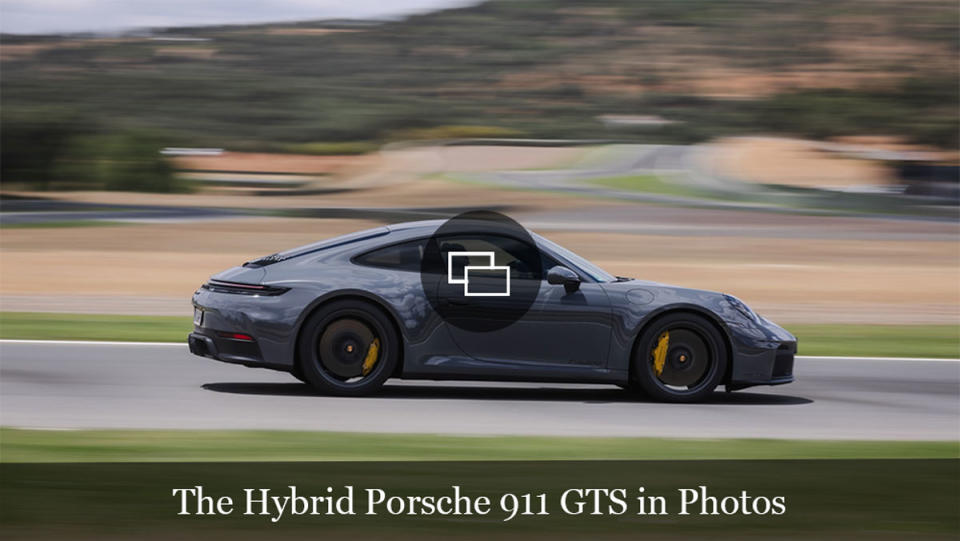First Drive: Porsche’s New 911 Hybrid Delivers More Than Enough Agility and Speed to Annoy the Purists
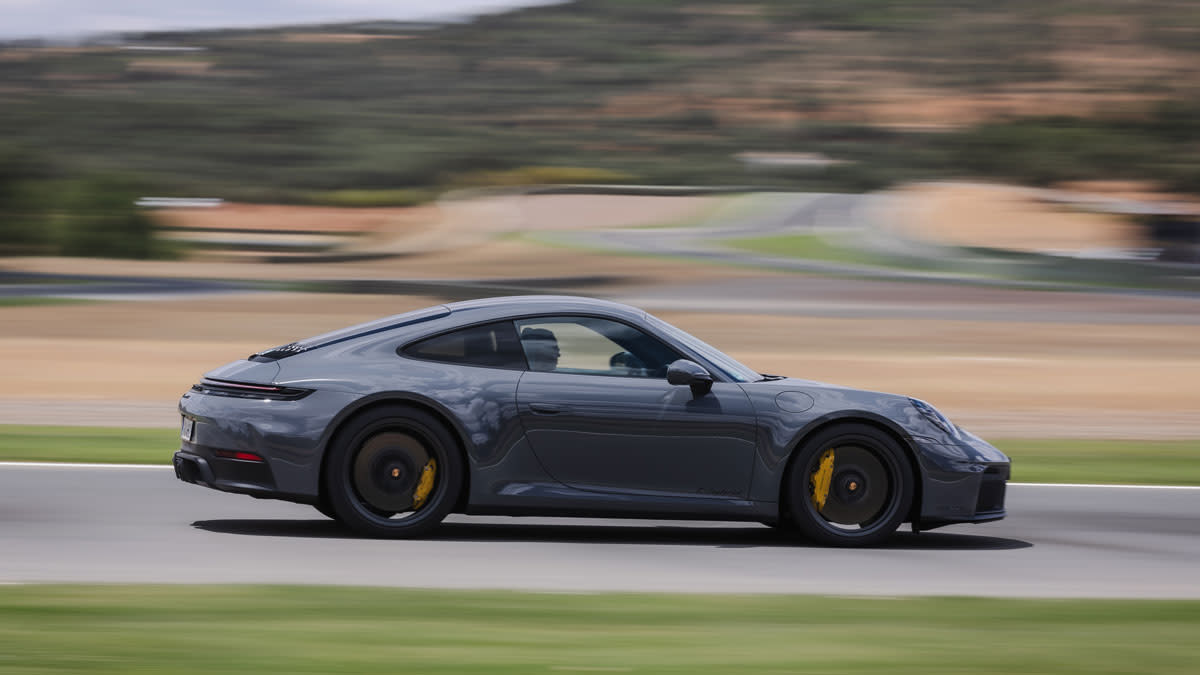
The Porsche 911 has died countless deaths at the wrath of pundits, dilletantes, and peanut galleries, every technological leap fueling the argument that the end is nigh for the German marque’s flagship sports car. And yet the slant-tailed model persists, change and all. This time around, the demon is hybridization, which takes the form of the first battery-augmented road-going, rear-engined Porsche ever, the 2025 Porsche 911 GTS.
The “road-going” bit is a telling qualifier, as Porsche also flirted with hybridization some 14 years ago with the fearsome GT3 R Hybrid race car. The automaker’s other aggressive hybrids are no less compelling and include the 918 Spyder supercar and 919 racer, sensational performers that remain benchmarks long after their debuts.
More from Robb Report
Porsche Is Phasing Out Its Gas-Powered Boxsters, Caymans, and Macans
First Drive: The 690 HP McLaren Artura Spider Deftly Balances Grunt and Grace
Car of the Week: This Pristine 2015 McLaren P1 Could Fetch $1.3 Million at Auction
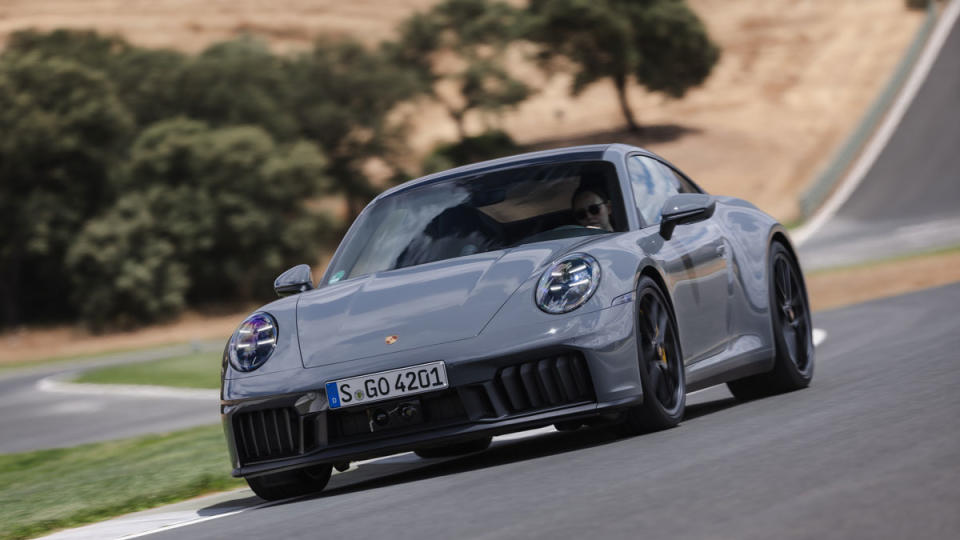
With the new GTS hybrid, Porsche treads lightly on the 911’s fundamentals by resisting a plug-in-hybrid configuration, which would add significant pounds due to that format’s hefty weight additions, such as a larger battery and a clutch to decouple the engine from the drivetrain. The plug-in setup works to great effect in Bentley’s new Continental GT Speed hybrid, which leverages Porsche technology to bridge the brand’s gap to full electrification. In this non-plug-in application, however, a tiny 1.9 kWh battery running on 400 volts replaces the accessory battery in the frunk, which has relocated to the rear of the vehicle for balance.
For those suspecting the 911 GTS is an efficiency play, consider the all-out hardware: its turbocharged 3.6-liter flat-six engine is larger than that found in the base model, and with electric assistance, the octane/electron combination produces 532 hp, a gain of 150 hp compared to that of the base Carrera. There’s also a mountain of torque thanks to the EV motor’s added twist, peaking at 449 ft lbs between a 2,000 to 5,000 rpm spread.
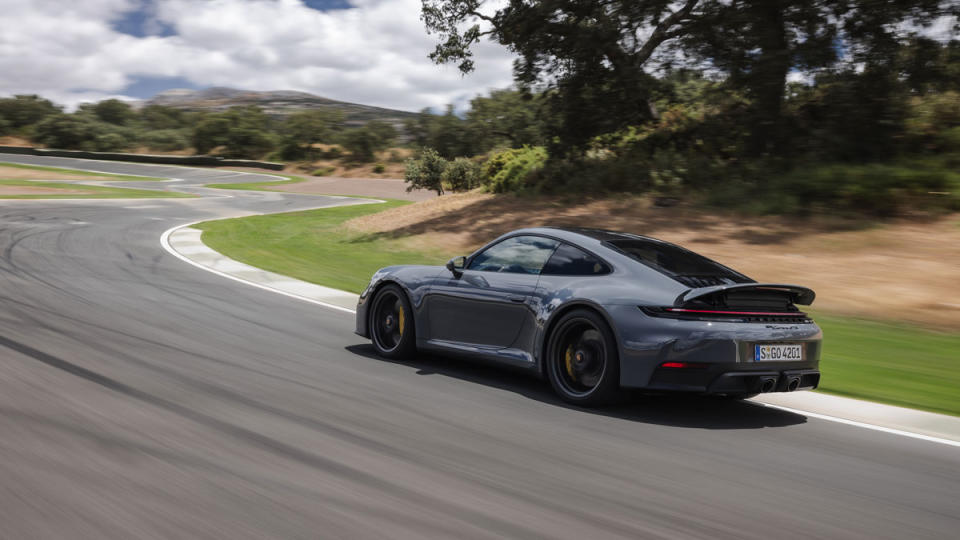
Porsche claims the hybrid system’s weight gain is only 102 pounds, but it should be noted that the weight of 2025 model-year 911s starts without a rear seat, which has become a no-cost option that adds another 22 pounds of mass. It sounds incidental, but every ounce counts when it comes to weight management in a driver-focused sports car. That said, the GTS’s curb weight of 3,536 pounds includes standard hardware like rear-axle steering and an eight-speed PDK paddle shifter. (The GTS’s electric motor makes it impossible to package a manual transmission with the hybrid drivetrain.)
Our first experience with the GTS comes in a rear-drive Cabriolet version, which we pilot over a mountainous route between Marbella and the Ascari Race Resort nestled in Spain’s Andalucian countryside. First impressions present several sacred cows that have been sacrificed in the name of progress: Porsche’s familiar left-hand key, famously introduced for running starts at Le Mans, has been swapped for a Start/Stop button. We’re told the button enables new functionality, including remote starting and remote parking. But the feature goes against our instinct to not mess with a formula that works. It’s also somewhat hidden behind the steering wheel, which doesn’t help the argument.
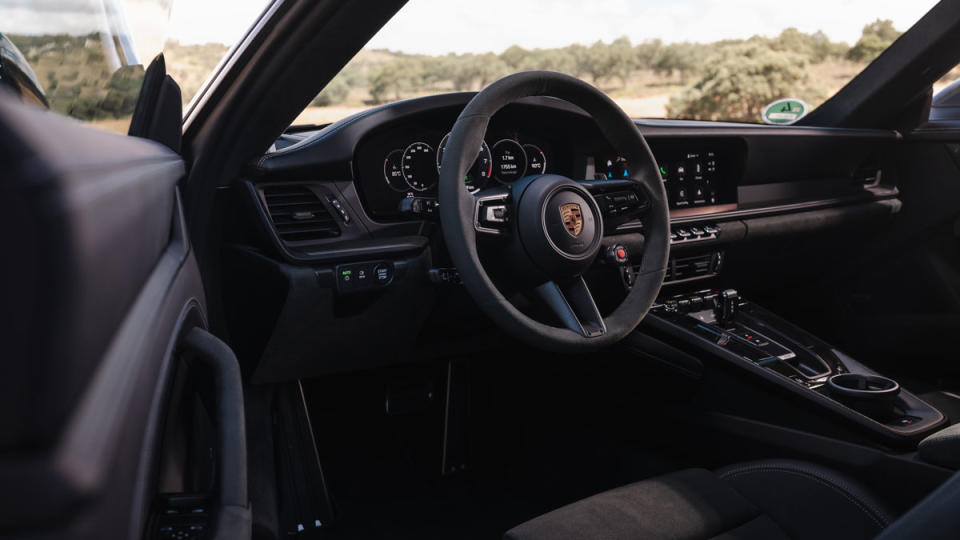
The other trigger for purists is the loss of the analog tachometer front and center, replaced by a curved 12.6-inch screen. Again, we have a knee-jerk desire to retain the physical tach, if only because it’s one of the few remaining bastions of analog instrumentation in an increasingly digital, and subsequently anonymous world of user-interface design. For what it’s worth, the new setup functions fine—even better than before, thanks to the fact that the virtual gauges are no longer partially blocked by the driver’s hands. These functional improvements are happily acknowledged. But they also beg the question as to whether buyers of premium sports car are seeking perfection or heritage, the latter being a commodity that is already in short supply and arguably destined for extinction.
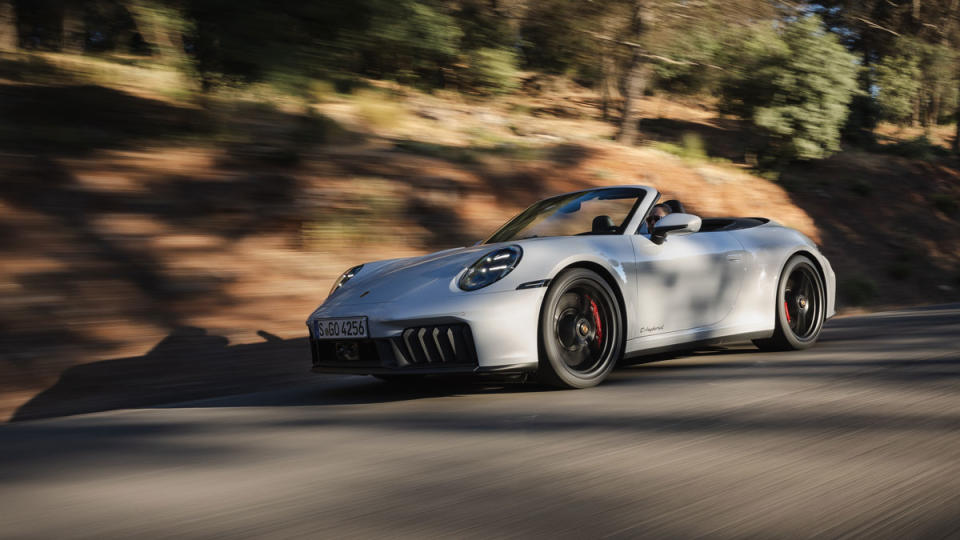
Those philosophical questions take a momentary backseat to power when the GTS is driven at full tilt. Hammer the accelerator, and the duopoly of gasoline and electric motivation creates bawdy thrust, with bold low-end torque and a strong pull all the way to a 7,500 rpm redline in each gear. Whereas the 2016 introduction of standard turbocharging to the 992.2 lineup transformed the low-end power of the 911, hybridizing takes it to the next level. Acceleration from zero to 60 mph now comes in at 2.9 seconds in the coupe and 3.0 seconds flat in the cabriolet. The urgency is notable, and the accompanying exhaust note is satisfying, especially when the GTS’s standard sport-exhaust flap is set to open.
While the hybrid’s power is addictive and the speed intoxicating, the driver experience varies significantly between coupe, cabriolet, and Targa models. The open-air configuration is a lovely way to take in the natural surroundings, with a panoramic sky view and multisensory experience bringing an extra dimension to a drive like ours through the stunning Parque Nacional Sierra de las Nieves region. But when you’re not soaking up the wind in your hair and the sun on your skin, the mechanical sensations of an open-air GTS can feel muted compared to those delivered by the coupe. The steering is good but not transcendent, the chassis capable, but not disarmingly precise.
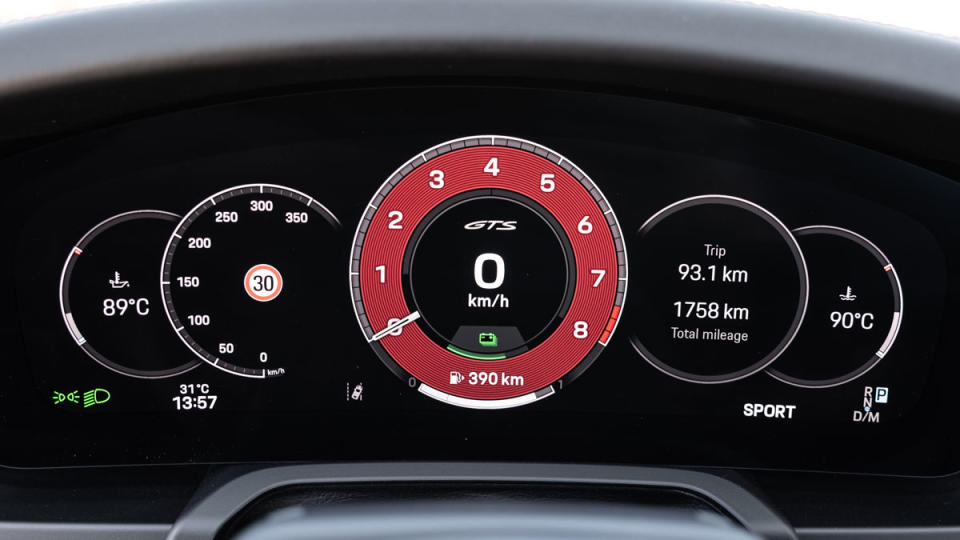
These are points that might not strike the general driving population. However, those in touch with the bleeding edge of Porsche’s all-time greats stand a good chance of feeling dissatisfied by the fact that the driving experience from both the GTS Cabriolet and Targa simply isn’t as magical as it could be. Perhaps it’s the weight—in its heaviest Targa 4 GTS configuration, equipped with the PDCC (Porsche Dynamic Chassis Control) system, this 911 can tip the scales at over 3,900 pounds. That’s over 900 more pounds than the lightest version available in 2024, the wispy 911 S/T.
For comparison, the 911 S/T, a $300,000 chunk of unobtanium, also happens to rev higher yet produce less horsepower. The S/T, though, tweaks the formula through extreme chassis tuning and a relentlessly focused effort on creating feedback for the driver—helping contribute to the widespread opinion that it’s one of the greatest 911s of all time. The GTS is a wildly different proposition, one focused on a far wider audience and a dramatically different mission.
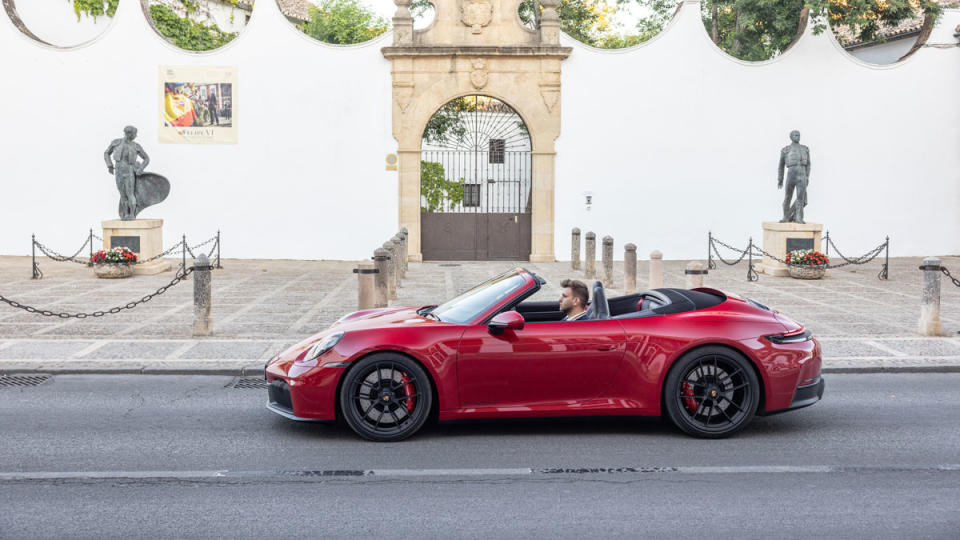
Interestingly, the GTS coupe variants present another personality entirely at the 3.371-mile Ascari circuit, a sprawling motorsport park that offers a varied combination of corners based on some of the world’s signature racetrack features. Notably, the new hybrid GTS bests the non-hybrid GTS model it replaces by 8.7 seconds at the Nürburgring Nordschleife track, putting its lap time on par with that of the previous-generation GT3. However, the new model goes about its lap times in an entirely different way, offering improved grip (thanks to wider tires) that helps handle its greater power compared to the track-focused model.
Whereas the GT3 is more go-kart with its precise steering and razor-sharp responsiveness, the new GTS uses beefier power and torque, a recalibrated suspension, and the optional PDCC system to match its pace. The optional carbon-ceramic brakes go a long way toward boosting confidence at the track, with 10-piston front calipers that deliver breathtakingly powerful deceleration. The feeling is less visceral and does not deliver the same seat-of-the-pants feel, yet the result, at least if you’re keeping track of lap times, is nonetheless noteworthy. For a new model positioned just above the base Carrera (for now), the GTS is a serious overachiever.
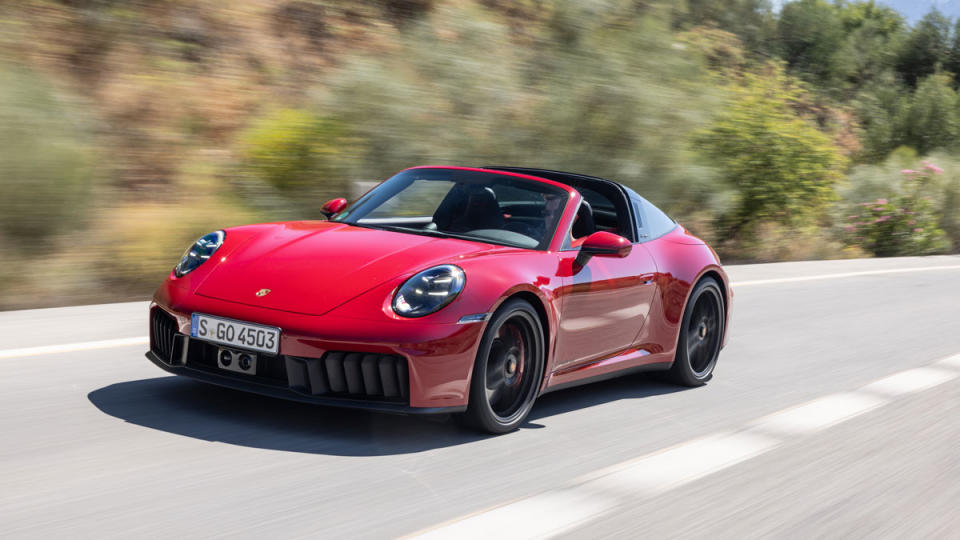
There will be an inevitable chorus of naysayers who criticize the GTS for sapping the soul of their venerable 911. And while there might be a partial truth to that argument, the departure from orthodoxy is only half the story, which brings us back to the broader scope of the 911 lineup. Yes, electrification is an inevitability with Porsche’s most coveted model, and it’s recently been leaked that the Cayman and Boxster will, in fact, be available only in pure EV form starting in 2025. But until Porsche’s premiere sports car reaches that fate, the GTS represents an impressive alternative to the conventional 911.
With plentiful power and long-distance comfort, the GTS may not be the track weapon every Porschephile is seeking—but we shouldn’t be surprised because it’s right there in the name: Grand Turismo Sport, Porsche speak for the combination of high performance and everyday usability. And yes, there will also be more focused RS versions likely offering crisply analog, naturally aspirated driving experiences to counter the GTS’s grand-touring sensibilities. Porsche’s 911 story may have changed with the hybrid GTS, but if the automaker’s history of satisfying its most ardent drivers is any indication, it’s a tale that’s far from over.
Click here for more photos of Porsche’s hybrid 911 GTS.
Best of Robb Report
Sign up for Robb Report's Newsletter. For the latest news, follow us on Facebook, Twitter, and Instagram.

 Yahoo News
Yahoo News 